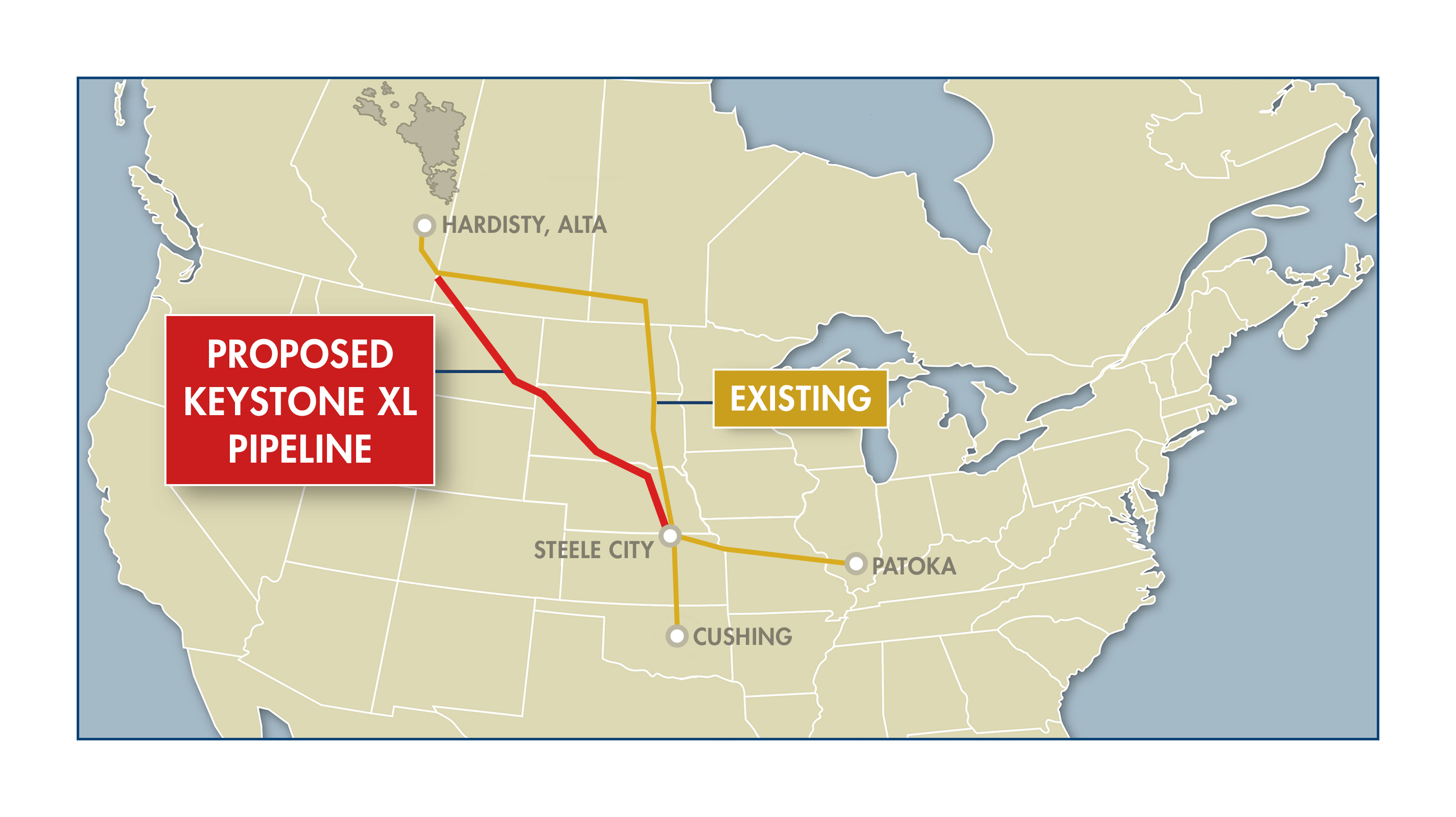
See also “Downsized national monuments threaten history of Native Americans, opponents say“
Paul Seamans lives in the pathway of the proposed Keystone XL Pipeline in Draper, South Dakota. He was contacted by TransCanada (the company that owns Keystone XL Pipeline) in March or April 2008. The company wanted to buy his land.
Seamans said he initially considered the offer. “When I first started out, I didn’t think it would be quite so bad. At that time, I didn’t know anything about tar sands and oil,” Seamans said.
According to Seamans, the TransCanada officials acted like they were really great people and offered him a great deal. However, things changed when Seamans learned more about the details of how the pipeline’s construction would change the land and threaten the water supply.
“I didn’t know how destructive it is to the land and environment. That turned me against them,” Seamans said.
But TransCanada officials said if he did not sign and accept the offer, they would take him to court and take his land.
Seamans’ property has become one small saga in a battle over the pipeline, and he is afraid TransCanada’s project will eventually cross his land whether he likes it or not.
“I’ve been fighting this since 2008,” Seamans said.
Timeline of the Keystone XL Pipeline
The Keystone XL oil pipeline’s proposed route in U.S. territory would run from Morgan, Montana, to Steele City, Nebraska — a total of 875 miles. TransCanada sent the first application for a presidential permit on Sept. 19, 2008. The Indigenous Environmental Network (IEN) and North Coast Rivers Alliance (NCRA) have filed a lawsuit against the Trump administration’s approval for the permit.
United States District Judge Brian Morris issued a 54-page order to temporarily stop the construction of the Keystone XL oil pipeline over the Trump administration’s approval on Nov. 8.
Morris states the U.S. Department of State violated the National Environment Policy Act (NEPA) and the Administrator Policy Act (APA) because it ignored the findings concerning climate change, impacts to cultural resources, oil spills and health impacts.
On Jan. 24, 2017, four days after President Donald Trump was sworn into office, he invited TransCanada Keystone XL Pipeline to resubmit an application to the Department of State for a presidential permit to allow construction for the importation of petroleum.
Morris issued a preliminary ruling in August 2018. According to the 13-page document, the National Environmental Policy Act (NEPA) requires federal agencies to prepare an environmental impact statement listing any actions toward changing the environment.
The lack of consideration has caused dissatisfaction for the State Department’s approval of the Keystone XL Pipeline. The conclusion of the court declined the presidential permit and TransCanada won’t begin construction of the Keystone XL Pipeline until the second quarter of 2019.

Mark Tilsen from Porcupine, South Dakota, is a member of the Oglala Lakota Nation. He is an educator, poet and environmental activist. He started his environmental efforts at Standing Rock, North Dakota, fighting against the Dakota Access Pipeline. He was invited by one of his friends and planned to go for only a weekend. However, he stayed at Standing Rock for five months.
“My primary concern is protecting the drinking water of the Lakota Nation,” Tilsen said.
Tilsen is currently at the L’eau Est La Vie camp in Louisiana fighting against the Bayou Bridge Pipeline — the last part of the Dakota Access Pipeline.
He heard about the judge’s decision to stop construction of the Keystone XL Pipeline and thought the decision would have little effect because he said permits scare away investors, but don’t change what the pipeline companies do.
Tilsen said he thought Morris’ order was “utterly irrelevant. The reason why is these pipelines build without permits all of the time.”
The Indigenous Environmental Network’s Frontline Community Organizer Joye Braun is a member of the Cheyenne River Sioux Nation. She is opposed to oil pipelines because she has seen the land destroyed by those who build and maintain them.
“They build them fast and don’t do everything they say they are going to do in regards to the safety of the pipeline,” Braun said.
According to Lakota mythology, the “black snake” will run through the land and bring destruction to the people and earth. Many native people, including Braun, believe the oil pipelines are the black snake in this traditional myth.
“Oil pipelines are the black snake. They are huge factors to climate change,” she said.
Braun considers Morris’ decision a huge win, but she does not believe TransCanada will completely stop construction. “I have personally seen them moving materials, not pipe, but moving big, huge machinery that is used for accessing roads and to keep heavy equipment from sinking in,” Braun said.
She and the Indigenous Environmental Network are monitoring to see what TransCanada is going to do and see if the company begins construction despite the judge’s order.
“We are paying attention and we will go after them (if they begin construction),” Braun said.
Braun is passionate about the work she does because she believes she is helping her family, her people and helping to protect the land for a better future. “We can only do that when we join together in unity and recognize each others’ strengths and weaknesses, because differences are strengths too,” she said.
This podcast explains more about the Keystone XL Pipeline with Joye Braun, Mark Tilsen and Paul Seamans.




